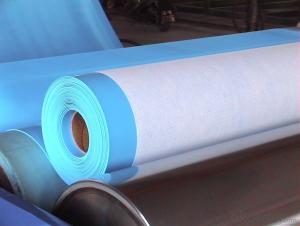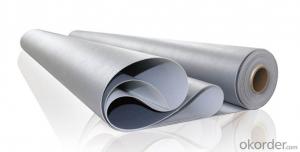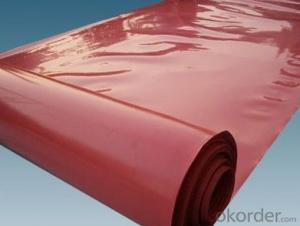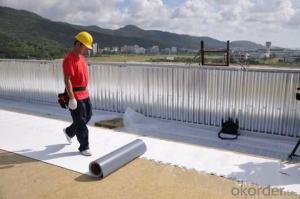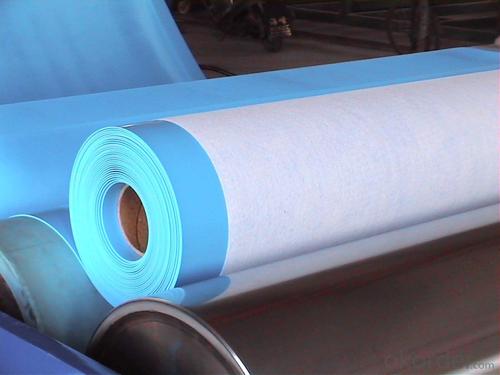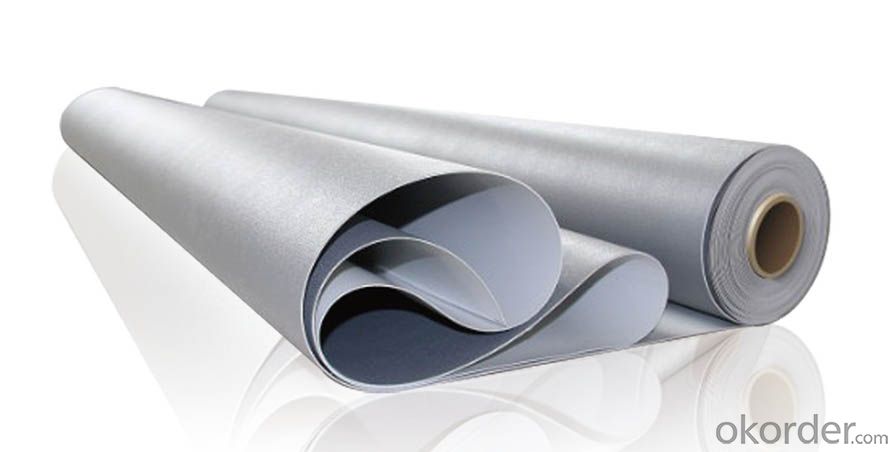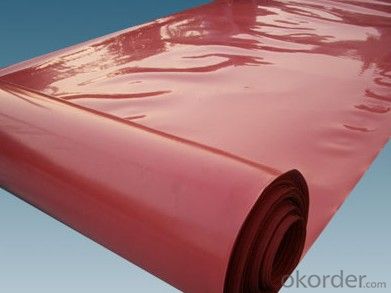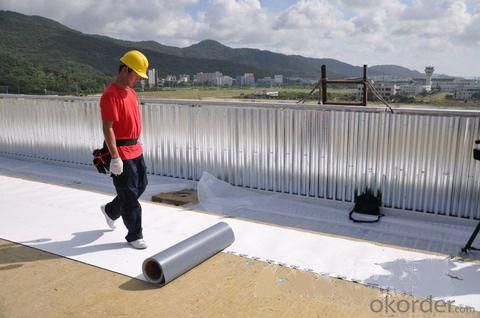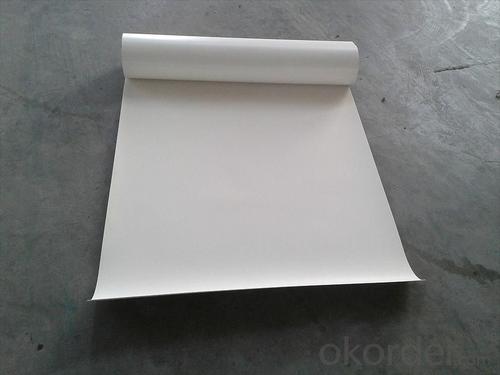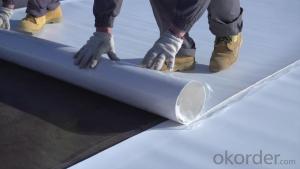TPO Waterproof Membrane for Roofing Construction
- Loading Port:
- Qingdao
- Payment Terms:
- TT or LC
- Min Order Qty:
- 2000 m²
- Supply Capability:
- 800000 m²/month
OKorder Service Pledge
OKorder Financial Service
You Might Also Like
Description Of TPO Waterproof Membrane for Roofing Construction:
Thermoplastic polyolefin (TPO) membrane is based on polypropylene and EP (ethylene-propylene) rubber polymerized together by using state-of-the-art polymer manufacturing technology. This technology enables TPO membranes flexible at low temperatures without the use of polymeric or liquid plasticizers.TPO membranes fall into two main types: Homogeneous TPO & Reinforced TPO. Reinforced TPO has a polyester mesh layer in the middle, which provides reinforced membranes with high breaking and tearing strength and puncture resistance."
Main Features of TPO Waterproof Membrane for Roofing Construction:
- Easy installation with good system integrity, need few accessories
- High tensile and tear strength, puncture resistance
- No plasticizer, heat aging and UV resistance, durable
- Hot-air welding, rapid welding speed, high peel strength (two times of PVC)
-No chlorine, 100% recyclable, environment friendly
- Durable hot-air welding performance and convenient maintainance
- Smooth surface, unfading and stain resistance
Specifications of TPO Waterproof Membrane for Roofing Construction:
| Type | Thickness (mm) | Weight (kg/sqm) | Roll Size (m) | Colors | 20ft Container |
| Homogeneous TPO waterproof membrane | 1.0 mm | 1.63kg/sqm | 2.05m x 20m | White/ Grey | 14000 sqm |
| 1.2 mm | 1.83kg/sqm | 2.05m x 20m | White/ Grey | 12000 sqm | |
| 1.5 mm | 2.24kg/sqm | 2.05m x 20m | White/ Grey | 10000 sqm | |
| 2.0 mm | 2.30kg/sqm | 2.05m x 20m | White/ Grey | 9000 sqm | |
| Reinforced TPO waterproof membrane | 1.2 mm | 1.83kg/sqm | 2.05m x 20m | White/ Grey | 12000 sqm |
| 1.5 mm | 2.24kg/sqm | 2.05m x 20m | White/ Grey | 10000 sqm | |
| 2.0 mm | 2.30kg/sqm | 2.05m x 20m | White/ Grey | 9000 sqm |
Applications of TPO Waterproof Membrane for Roofing Construction:
- Roof construction & steel structure of both industrial and civil engineering
- Underground engineering, such as subways, tunnels, air Raid shelter, etc.
- Sewage treatment, dam, reservoir and basement, grain storehouse, etc.


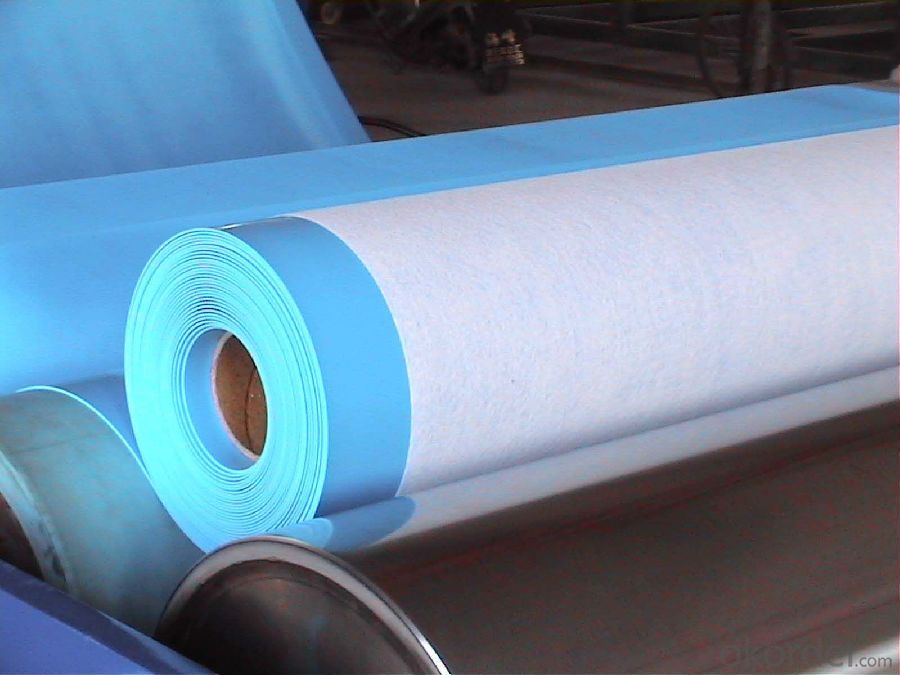
FAQ:
1. What are we supplying?
We are specialized in producing TOP membrane, Colorful Asphalt Roof Shingle, SBS/APP modified bitumen waterproof membrane, Self adhesive bitumen waterproof membrane, PVC waterproofing membrane, EPDM rubber roofing membrane, Single Component Polyurethane Waterproof Coating, and Spray Polyurea Waterproof Coating.
2. How Many years experience do we have?
We have been exported to more than 20 countries in the past 15 years.
3. How long do we usually reply your request?
We always reply our customer within 24 hours.
- Q: Are waterproofing membranes resistant to frost damage?
- Waterproofing membranes, in general, exhibit resistance towards frost damage. These membranes are specifically crafted to endure diverse weather conditions, which include freezing temperatures. They typically comprise modified bitumen, PVC, EPDM, or TPO, materials renowned for their exceptional frost and environmental resistance. These materials are engineered to maintain their flexibility and elasticity, even in low temperatures, ensuring the preservation of the waterproofing membrane's effectiveness in preventing water infiltration. Furthermore, meticulous installation methods and regular maintenance can augment the waterproofing membranes' resistance to frost damage.
- Q: Are waterproofing membranes resistant to jet fuel?
- No, waterproofing membranes are not typically resistant to jet fuel. Jet fuel is a highly corrosive substance that can degrade certain materials, including waterproofing membranes.
- Q: Can a waterproofing membrane be used on roofs with skylights?
- Certainly, roofs with skylights can benefit from the use of a waterproofing membrane. It is strongly advised to employ a waterproofing membrane around skylights in order to prevent water infiltration or leakage. Skylights have the potential to become weak points in a roof system, as they form openings that can let water seep through if not adequately sealed. The application of a waterproofing membrane around the skylights serves to establish a watertight barrier that safeguards the roof from any potential leaks. Furthermore, a waterproofing membrane also offers added protection against external factors such as UV rays and changes in temperature, thereby extending the lifespan of both the skylights and the roof itself.
- Q: Can a waterproofing membrane be used for seawalls or bulkheads?
- Yes, a waterproofing membrane can be used for seawalls or bulkheads. Waterproofing membranes are designed to provide a barrier against water penetration and can be applied to various structures, including seawalls and bulkheads. These membranes are typically made of materials such as bitumen, rubber, PVC, or polyurethane, which offer excellent resistance to water and ensure the structural integrity of the wall or bulkhead. The membrane is applied to the surface of the structure, forming a continuous and durable waterproof layer that prevents water from seeping through. This helps protect the seawall or bulkhead from erosion, corrosion, and other forms of damage caused by exposure to seawater. Additionally, waterproofing membranes can also provide additional benefits such as increased durability, improved aesthetics, and enhanced resistance to UV rays and chemicals. Overall, the use of a waterproofing membrane is an effective solution for ensuring the long-term performance and durability of seawalls and bulkheads in marine environments.
- Q: Can a waterproofing membrane be used on below-grade foundations?
- Yes, a waterproofing membrane can be used on below-grade foundations. In fact, it is recommended to use a waterproofing membrane on below-grade foundations to prevent water infiltration and protect the foundation from moisture damage. The membrane acts as a barrier, effectively preventing water from seeping into the foundation walls and causing issues such as leaks, mold, and structural damage. Additionally, waterproofing membranes are designed to withstand the high water pressure typically found in below-grade environments, making them an ideal solution for protecting foundations in basements and other below-ground structures.
- Q: Can a waterproofing membrane be used in tunnels or underground structures?
- Yes, a waterproofing membrane can be used in tunnels or underground structures. Waterproofing membranes are designed to create a barrier against water penetration, making them effective in preventing water ingress in underground environments. These membranes are commonly used in tunnel construction to protect against moisture and water-related damages.
- Q: Are waterproofing membranes easy to install?
- Yes, waterproofing membranes are generally easy to install. They come in various forms such as sheets, rolls, or liquid coatings, making them adaptable to different surfaces and applications. The installation process typically involves cleaning and preparing the surface, applying the membrane, and ensuring a proper seal. While some technical knowledge and tools may be required, manufacturers often provide detailed instructions and guidelines for installation, making it easier for both professionals and DIY enthusiasts. Additionally, advancements in technology have led to the development of self-adhesive membranes, which further simplify the installation process. Overall, with the right preparation and following the correct installation procedures, waterproofing membranes can be installed with relative ease.
- Q: Can a waterproofing membrane be used for a bridge?
- A bridge can indeed utilize a waterproofing membrane. This specialized material is employed specifically to hinder the infiltration of water into structures, including bridges. Its application is typically on the surface of the bridge deck, creating an uninterrupted barrier against water penetration. This barrier is particularly crucial for bridges, as they are constantly exposed to environmental elements such as rain, snow, and moisture. The waterproofing membrane serves to safeguard the bridge deck and the concrete beneath it by preventing moisture damage, which can lead to deterioration and structural problems over time. With water penetration prevented, the lifespan of the bridge is extended, reducing the need for expensive repairs. Furthermore, the waterproofing membrane also enhances the bridge's overall durability and performance by minimizing the potential for reinforcing steel corrosion and blocking the entry of harmful chemicals. All in all, using a waterproofing membrane is highly recommended for bridges to ensure their long-term functionality and structural soundness.
- Q: What is the accounting subject of the waterproofing membrane
- Own spare, included in the project materials Waterproof sheet, used for sale, remember inventory goods
- Q: Can a waterproofing membrane be used for a stadium roof structure?
- A stadium roof structure can utilize a waterproofing membrane to prevent water damage. This type of membrane acts as a protective layer that stops water from infiltrating the roof. It is typically constructed from water-resistant materials like rubber or synthetic polymers. For stadiums with open-air or retractable roofs, it is crucial to employ a waterproofing membrane to maintain a watertight environment and prevent leaks or water-related issues. This is especially significant because these types of stadiums are exposed to the elements and more vulnerable to water infiltration. A waterproofing membrane can be applied to different types of stadium roof structures, including metal, concrete, or fabric roofs. It is typically installed beneath the roofing material, serving as a protective barrier against water. By preventing water from seeping into the roof, the membrane helps to extend the roof's lifespan and safeguard the stadium's interior from water damage. Furthermore, a waterproofing membrane can offer additional benefits to a stadium roof structure. It can enhance energy efficiency by minimizing heat loss or gain through the roof. Some membranes also provide UV resistance, protecting the roof from harmful ultraviolet rays. In summary, implementing a waterproofing membrane in a stadium roof structure is a practical and efficient solution to ensure the roof remains watertight, durable, and safeguarded from water damage.
Send your message to us
TPO Waterproof Membrane for Roofing Construction
- Loading Port:
- Qingdao
- Payment Terms:
- TT or LC
- Min Order Qty:
- 2000 m²
- Supply Capability:
- 800000 m²/month
OKorder Service Pledge
OKorder Financial Service
Similar products
Hot products
Hot Searches
Related keywords
